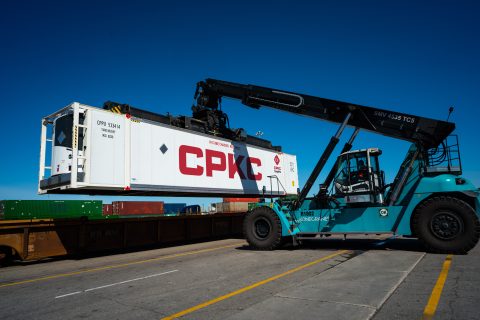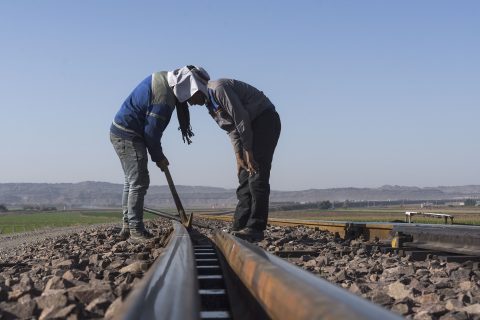Lithuania maps out Rail Baltica connection with capital Vilnius

Lithuania has proposed nine possible railway lines connecting its capital Vilnius to the Rail Baltica. Lithuania has the potential to become an important transit country on the New Silk Road, as it is the only country in the region having both the 1520mm and 1435mm gauge rail networks. The country has presented a feasibility study of the connections to the European Commission, as its realisation depends on European funding.
The design of the infrastructure connecting the Baltic states and Poland did not include the capital of Lithuania so far. In Latvia and Estonia the route of the line connects the capitals of Talinn and Riga. In Lithuania, the core route passes through Kaunas, the second-largest city of the country. Rail Baltica will not be complete without ensuring a standard-gauge railway connection to Vilnius, Lithuania Railways beliefs. “The Vilnius link, which allows us to capitalise on the potential of the capital, will undoubtedly improve the economic performance of the whole project and will become a very important part of the success of Rail Baltica”, the company said.
Financing critical
The total length of the tracks examined exceeds 1000 kilometre. Factors considered are the technical requirements for the European Union rail network and the design guidelines for the Rail Baltica project. One of the most important factors in implementing this part of the project is time, the railway company pointed out. “Therefore, the Ministry of Transport and Communications is ready to prepare territorial planning documents.”
But, as for the entire project, the execution depends heavily on EU funding. In all three Baltic states 80–85 percent of the costs have been covered by European funds. Lithuania has received 345 million Euros from the connecting Europe Facility (CEF) and EUR 1.1 billion Euros from the Cohesion Fund under the current multi-annual financial framework (2014-2020).
As such, it is the largest beneficiary among the Baltic states. In total, the country requires about 2,474 billion Euros to complete its part of the railway network. Timely completion of the network depends on the continuation of this financing scheme, transport ministers have emphasised. On 2 May, the EU Commission proposed the budget for the period 2021-2027. An amount of 12.8 billion Euros is reserved for transportation projects. Another 11.2 billion Euros will be added from the Cohesion Fund. The final allocation per MFF-post will be announced on 6 June.
Border with Poland
In the meantime, Lithuania Railways also signed an agreement with Poland’s largest rail freight operator PKP Cargo in order to streamline the handling of freight at border crossings between the two countries. The two companies will look at the possibility of using the Mockava and Kaunas intermdodal terminals in Lithuania for handling containers travelling from China to Poland, as well as the digitalisation of shipping documents and the use of the CIM consignment note for cargo destined for the EU, the International Railway Journal reported.
A seamless connection to bordering Poland is equally important for the successful implementation of the Rail Baltica line in Lithuania, which is the only country in the region having both the 1520mm and 1435mm gauge rail networks. While the 1520mm gauge network will continue to exist, it is extended with the European gauge network in the shape of Rail Baltica, aiming to connect to the European railway network. The CIS states operate a 1520 gauge network, and procedures at the border with Poland can be timely due to transhipment to the other network.
You just read one of our premium articles free of charge
Want full access? Take advantage of our exclusive offer





